Codex Washingtonianus Contains A Passage Not Seen In Any Other Biblical Manuscript
Ellen Lloyd - AncientPages.com - The Codex Washingtonianus is the world's third oldest Bible, located at the Smithsonian's Freer Gallery of Art. It consists of the four Gospels in the so-called Western order (Matthew, John, Luke, and Mark, as Dea).
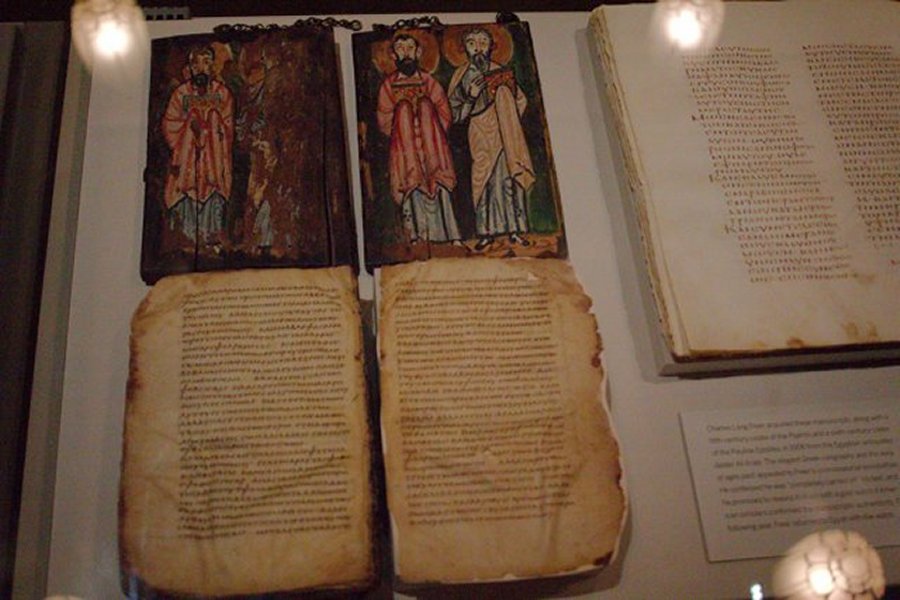 Codex Washingtonianus is the world’s third oldest Bible. Author: Two scribes. Language: Greek, 4th-5th century.
Codex Washingtonianus is the world’s third oldest Bible. Author: Two scribes. Language: Greek, 4th-5th century.
It was acquired in Egypt by C.L. Freer, an American businessman, and philanthropist (hence, the Freer-Gospels), in 1906 and is now in the Freer Gallery of Art of the Smithsonian Institution in Washington, D.C. Codex Washingtonianus is a 4th–5th-century manuscript probably copied from several different manuscripts.
This priceless ancient book is heavily guarded and rarely makes public appearances. The last time it was on display was in February 2014, when curators showed the document in the Freer Gallery's Victorian Peacock Room, along with a second of four ancient manuscripts purchased by Freer, the museum's founder. The two remaining manuscripts are too delicate or damaged and cannot be put on display.
The Bible has a painted wooden cover, with almost 200 parchment pages, and is reportedly more than 1,500 years old.
 Painted cover of the Codex Washingtonianus, depicting the evangelists Luke and Mark (7th century).
Painted cover of the Codex Washingtonianus, depicting the evangelists Luke and Mark (7th century).
It features the four Gospels in Greek and is known as the "Codex Washingtonianus," or the "Washington Gospels."
The gallery said Freer purchased the manuscripts in 1906 in Giza, Egypt, and later organized and underwrote significant early biblical scholarship.
The pages are sensitive to light and humidity, so the codex never leaves the museum and isn't exhibited very often.
According to Craig Evans, a biblical scholar at Acadia University in Nova Scotia, there are only two other complete texts of the Gospels-Matthew, Mark, Luke, and John-that are older than the Codex Washingtonianus. They are the Codex Vaticanus, held at the Vatican, and the Codex Sinaiticus, usually held at the British Library in London.
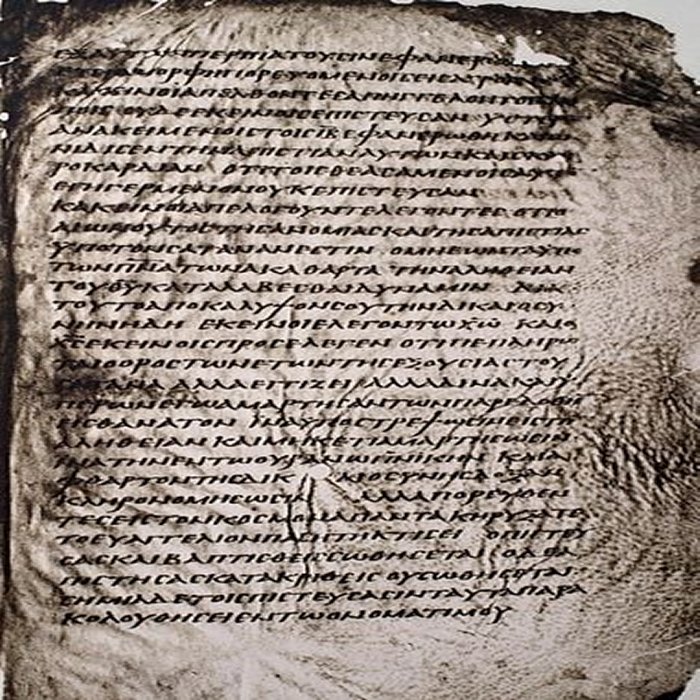 Mark 16:12-17 with the Freer Logion in 16:14.Image credit: Author unknown - Public Domain
Mark 16:12-17 with the Freer Logion in 16:14.Image credit: Author unknown - Public Domain
When the Codex Washingtonianus was first published publicly in 1912, it caused controversy because it contained an extra passage in the Gospel of Mark.
"While researching their cultural context and physical structure, it was discovered that the Washington Codex contains a passage not found in any other biblical text - a segment at the end of the Gospel of Mark known as the Freer logion (a logion is a saying attributed to Jesus)," the Free gallery said.
A translation of the Freer logion reads: "And Christ replied to them, 'The term of years of Satan's power has been fulfilled, but other terrible things draw near.'"
That passage seemed to address whether God or Satan was in charge, said Bethel University's Holmes.
At the time, news of the passage came amid rumblings that the King James Version wasn't sufficiently representative of the earliest iteration of the Bible, said Evans. Conservative Christians were unhappy about that, he added.
So the publication of the Codex Washingtonianus, with its additional passage attributed to Jesus, caused more consternation because it was another challenge to the Bible people knew.
It's not so much a problem now, he said. But at the time, it shook up a lot of people.
The additional passage, referred to as the Freer logion, was probably an oral saying that somehow made its way into the Gospels, said Holmes.
"There's no religious tradition that uses it as part of Scripture," he said. "It's almost like a margin comment that somebody wrote down because they heard it and wanted to remember it, and the scribe worked it in later."
He wasn't particularly religious and wasn't attracted to them as sacred texts. Freer purchased the codex partly because he found it mysterious and beautiful.
Written by - Ellen Lloyd – AncientPages.com
Updated on October 19, 2022
Copyright © AncientPages.com All rights reserved. This material may not be published, broadcast, rewritten or redistributed in whole or part without the express written permission of AncientPages.com
More From Ancient Pages
-
 Earliest Evidence Of Rice Harvesting Provided By China’s Ancient Stone Tools
Archaeology | Dec 8, 2022
Earliest Evidence Of Rice Harvesting Provided By China’s Ancient Stone Tools
Archaeology | Dec 8, 2022 -
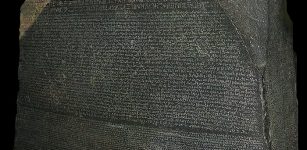 On This Day In History: Precious Rosetta Stone Found By Napoleonic Expedition To Egypt – On July 15, 1799
News | Jul 15, 2016
On This Day In History: Precious Rosetta Stone Found By Napoleonic Expedition To Egypt – On July 15, 1799
News | Jul 15, 2016 -
 Dozens Of Giant ‘Lost’ Nazca Geoglyphs Unearthed By Drones In Peru
Archaeology | Apr 7, 2018
Dozens Of Giant ‘Lost’ Nazca Geoglyphs Unearthed By Drones In Peru
Archaeology | Apr 7, 2018 -
 Ancient Secrets Of The Theopetra Cave: World’s Oldest Man-Made Structure And Home To Humans 130,000 Years Ago
Civilizations | May 12, 2016
Ancient Secrets Of The Theopetra Cave: World’s Oldest Man-Made Structure And Home To Humans 130,000 Years Ago
Civilizations | May 12, 2016 -
 Louvre Museum’s Entire Collection Is Now Available Online To Anyone
News | Mar 31, 2021
Louvre Museum’s Entire Collection Is Now Available Online To Anyone
News | Mar 31, 2021 -
 Manasota People: Will 1,300-year-Old Village Tell Us About Their Lives?
Archaeology | Jan 11, 2016
Manasota People: Will 1,300-year-Old Village Tell Us About Their Lives?
Archaeology | Jan 11, 2016 -
 Mayapan: How The Last Big Mayan City Met Its End
Featured Stories | Jul 26, 2017
Mayapan: How The Last Big Mayan City Met Its End
Featured Stories | Jul 26, 2017 -
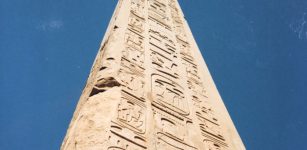 How On Earth Did The Ancient Egyptians Raise Their Colossal Obelisks?
Featured Stories | Feb 14, 2022
How On Earth Did The Ancient Egyptians Raise Their Colossal Obelisks?
Featured Stories | Feb 14, 2022 -
 Archaeologists Search For The Tomb Of Biblical Joshua At Khirbet Tibnah
Archaeology | Aug 5, 2022
Archaeologists Search For The Tomb Of Biblical Joshua At Khirbet Tibnah
Archaeology | Aug 5, 2022 -
 Ancient Human Remains Buried In Spanish Caves Were Subsequently Manipulated And Utilized
Archaeology | Sep 21, 2023
Ancient Human Remains Buried In Spanish Caves Were Subsequently Manipulated And Utilized
Archaeology | Sep 21, 2023 -
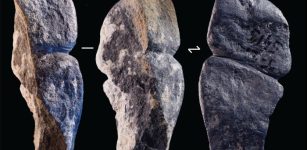 Oldest Carving Of A Penis Discovered On Ancient Mongolian Pendant
Archaeology | Jun 20, 2023
Oldest Carving Of A Penis Discovered On Ancient Mongolian Pendant
Archaeology | Jun 20, 2023 -
 Oklahoma’s Mysterious Hollow Hill – The Unexpected – Part 2
Featured Stories | Jul 9, 2020
Oklahoma’s Mysterious Hollow Hill – The Unexpected – Part 2
Featured Stories | Jul 9, 2020 -
 Samurai Swords: Katana And Wakizashi And Their Long Tradition
Ancient Traditions And Customs | Aug 6, 2018
Samurai Swords: Katana And Wakizashi And Their Long Tradition
Ancient Traditions And Customs | Aug 6, 2018 -
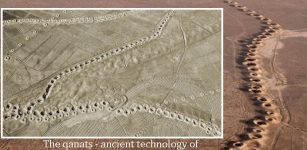 Qanats: Ancient 3,000-Year-Old Underground Irrigation Canals Invented By People Of Persia
Ancient Technology | Jul 13, 2020
Qanats: Ancient 3,000-Year-Old Underground Irrigation Canals Invented By People Of Persia
Ancient Technology | Jul 13, 2020 -
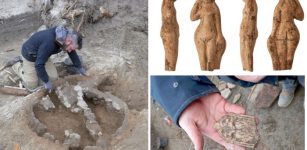 Ancient Roman Statues of Goddess Venus And Other Precious Artifacts Found In A Trash Pit In France
Archaeology | Apr 8, 2023
Ancient Roman Statues of Goddess Venus And Other Precious Artifacts Found In A Trash Pit In France
Archaeology | Apr 8, 2023 -
 On This Day In History: Battle of Stirling Bridge Took Place – On Sep 11, 1297
News | Sep 11, 2017
On This Day In History: Battle of Stirling Bridge Took Place – On Sep 11, 1297
News | Sep 11, 2017 -
 Giant Turtle-Shaped Rock Wangsan, Korea – One Of The Strongest Sources Of “ki”
Featured Stories | Jun 24, 2015
Giant Turtle-Shaped Rock Wangsan, Korea – One Of The Strongest Sources Of “ki”
Featured Stories | Jun 24, 2015 -
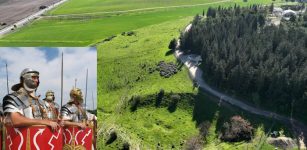 First Roman Military Amphitheater Unearthed Near Megiddo
Archaeology | Jun 1, 2022
First Roman Military Amphitheater Unearthed Near Megiddo
Archaeology | Jun 1, 2022 -
 Hidden 15th-Century Text On Medieval Manuscripts – Discovered By Students
News | Nov 23, 2020
Hidden 15th-Century Text On Medieval Manuscripts – Discovered By Students
News | Nov 23, 2020 -
 On This Day In History: First US Ship To Trade With China, ‘Empress Of China’ Sails From NY – On Feb 22, 1784
News | Feb 22, 2017
On This Day In History: First US Ship To Trade With China, ‘Empress Of China’ Sails From NY – On Feb 22, 1784
News | Feb 22, 2017
